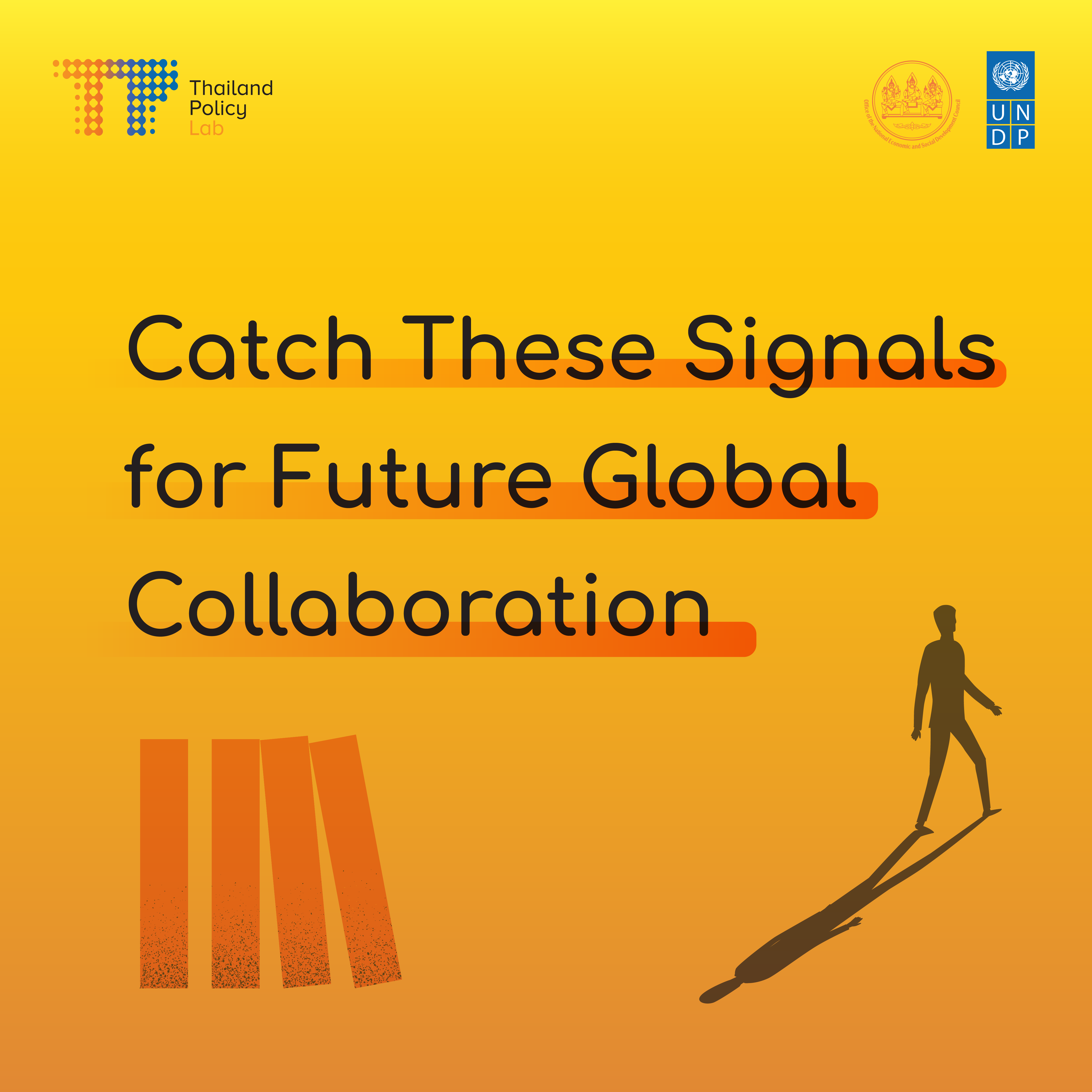International collaboration is one of the most pivotal factors in tackling climate change and negotiating and redistributing the limited natural resources. Simultaneously, technology has progressed so fast that we need international regulations as seen with the EU’s Child Sexual Abuse Materials (CSAM) which is an attempt to address the proliferation of child pornography.
These signals reflect the trend towards global collaboration, particularly among developing countries. In terms of environmental challenges, how can policymakers elevate the existing collaboration to pass on a just future to the younger generations? The UNDP Strategy & Futures Team categorises the signals under the theme “novel collaboration” that can be discussed under the following sub-themes:
1. Regulating the Unknown
Besides climate turbulence and increasing temperatures, there are also changes in the technological sector. “Metaverse” has just been introduced and technology has become another necessity in everyday life.
To forestall effects from climate change, countries around the world compete to invent technology to control temperature. This is called geoengineering or climate engineering like spraying chemicals into the atmosphere to deflect solar radiation. Yet these technologies can create fluctuations in temperature and quantity of rain, affecting agriculture and the environment. Decrease in natural resources also drives existing authorities to expand into new areas. The International Seabed Authority (ISA) allows the Metals Company to conduct the first large scale metals mining from the Pacific seabed – an action that is going to disrupt the underwater ecosystem.
Besides the environment, the widespread use of social media comes with two sides of the coin. It has made online contents concerning sexual abuse and violence, particularly of children and youths, more accessible.
These signals show how the accelerated effects of climate change and more advanced technology have superseded the same old regulations and how the competition to profit from limited natural resources has become even more aggressive.
How do policymakers go on from here, when such novel situations have emerged? Diverse contexts and conditions each country encounters should be taken as part of the decision making. The ISA’s decisions on metals mining in the Pacific, for example, may set precedents for exploitation of the ocean floor in other regions. We may need to enforce new regulations to address the safety of everyone. As seen with how the European Commission has enforced the Digital Services Act (DSA) to protect children from accessing illegal contents and to curb child pornography.
2. “OPECs” for everything
Environmental challenges have pushed developing countries to form new alliances. With the high demand for lithium, citizens resort to other renewable energies. Argentina, Chile, and Bolivia, as large producers of lithium, formed alliances to regulate the price. Other non-governmental partnerships have also been formed, the Ocean Rights Alliance invited both the public and private sectors to create an “ocean conservation” for its members to respect ocean rights.
These little signals point towards global collaboration, particularly among developing countries that come together for more negotiating power, to protect their citizens, or even to compete for the limited and decreasing natural resources.
Collaboration is a way to fend for the public good but we still need to ask: how are these new alliances going to affect the private sector? How is it going to protect indigenous people who live near the mines, and how are we going to protect them? How can we turn a crisis into opportunities and support the research for renewable energy?
3. Climate changing the financial system
Countries in the Global South bear the brunt of climate change while not being the principal contributors of it compared to those in the Global North. Not to mention that many in the Global South still live in poverty. To address this, the UN Climate Conference (COP27) agreed on a “loss and damage” fund for countries most vulnerable. The Vulnerable Twenty (V20) group, likewise, called for urgent debt relief and immediate reform of sovereign debt restructuring architecture for countries disproportionately affected by climate change. This has gained support globally, including the US Treasury Secretary that has called for the multilateral development banks (MDBs) to increase financial support for the vulnerable countries.
These signals reflect a similar trend as mentioned earlier: climate change has driven countries to form alliances to have more negotiating power, including on finance.
But how to achieve sustainability? We need to ask these questions: how do we improve the financial system to support countries that are vulnerable? How do we create a financial system that is equipped to combat climate change?
4. A new wave of debt swaps for climate and nature
Several countries have considered swapping debt for investment in climate. The Nature Conservancy has swapped almost $500 billion of debt of Seychelles, Belize, and Barbados for a $230 billion fund for climate conservation. Colombia’s government has offered debt swaps for conservation of the Amazon rainforest. Argentina’s government also offered debt swaps for green transition.
These signals reflect how the heavily-indebted countries are vulnerable to climate change while still attempting to combat the challenges.
Debt swaps for climate and nature can be one of the measures to tackle the fiscal problems induced by climate change. The measure is still novel, but if succeeded, it can be applied to other SDGs as well.
Source : UNDP Signal Spotlight 2023

